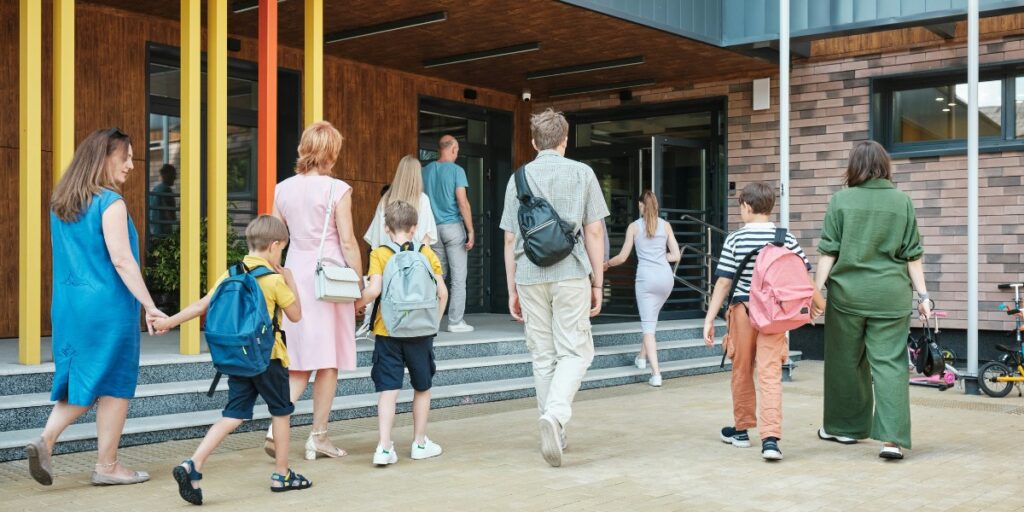Community schools often act as central hubs that extend well beyond the classroom, weaving together educational, social, and health services that benefit entire neighborhoods. In cities like Dallas, where diverse populations live alongside varying economic challenges, community schools frequently function as trusted institutions providing stability and support. By hosting programs such as after-school tutoring, health screenings, and family literacy workshops, these schools help meet the multifaceted needs of residents.
In many neighborhoods, community schools become places where residents naturally gather, forging social connections and reinforcing communal ties. Weekly food distributions, job fairs, or cultural celebrations hosted on school grounds draw families and neighbors together, fostering a sense of belonging and mutual support. These gatherings provide opportunities for sharing resources and ideas that can spark grassroots initiatives to address local issues, such as neighborhood beautification or safety patrols. Through these collective activities, community schools contribute to a strengthened social fabric that supports neighborhood resilience.
Read also: The Unseen Costs of Raising Children
What Specific Services Do Community Schools Provide That Support Both Students and Their Families?
Beyond delivering academic instruction, community schools often incorporate social and health services that respond to the everyday challenges families face. In some Dallas neighborhoods, on-site health clinics within schools offer preventive care and basic medical services, reducing barriers related to transportation or insurance. These clinics might conduct vision and dental screenings during school hours, helping identify issues that could otherwise impede a child’s learning.
Mental health services also play a significant role in community schools. Counselors and social workers embedded in schools provide students and families with access to emotional support, crisis intervention, and referral networks. These services can be critical in areas where external mental health resources are limited or stigmatized. Alongside healthcare, many community schools run adult education classes focused on English language learning, computer skills, or job readiness, addressing needs that contribute to family stability and economic mobility.
Afterschool and summer programming often focus on enrichment and safety, providing children with structured environments that foster social skills and academic growth. Activities such as music lessons, sports leagues, or STEM clubs offer positive outlets and reduce unsupervised time, which may otherwise expose youth to negative influences. These programs contribute to creating a more supportive neighborhood environment where families feel their children are cared for beyond traditional school hours.
How Do Community Schools Engage Families and Residents in Neighborhood Development?
Engagement of families and neighborhood residents is a hallmark of successful community schools. Many schools establish parent advisory committees or family councils where residents can voice concerns, suggest programs, and participate in decision-making. In Dallas, schools often collaborate with local nonprofits and civic groups to host town hall meetings or workshops that focus on topics ranging from college readiness to tenant rights.
Volunteer opportunities at community schools allow parents and neighbors to take active roles, whether helping with classroom activities, organizing events, or maintaining school grounds. This hands-on involvement strengthens ties between the school and community while empowering residents as partners in educational success. Schools also serve as communication centers, distributing newsletters or hosting information sessions on services available in the area, effectively connecting families with local resources.
Partnerships with neighborhood organizations expand the reach of community schools. Joint efforts might include hosting legal clinics, financial counseling, or voter registration drives on campus, turning schools into multi-service hubs that respond to the wider social determinants impacting families. These collaborative models illustrate how community schools can be catalysts for neighborhood cohesion and capacity building.
In What Ways Do Community Schools Impact Neighborhood Safety and Economic Stability?
Community schools can influence neighborhood safety by providing safe spaces and reducing factors associated with youth involvement in risky behaviors. When children participate in after-school programs or summer camps offered by community schools, they spend less time unsupervised in public spaces, which can contribute to lower neighborhood crime rates. The regular flow of families attending school events increases foot traffic and informal social surveillance, both recognized factors in enhancing community safety.
Some community schools engage with local law enforcement and neighborhood watch groups to develop strategies aimed at improving security while fostering trust. By involving residents in safety planning, schools contribute to a collective sense of responsibility and vigilance.
Economic stability in neighborhoods is supported through educational programs that enhance adult skills and job prospects. Adult literacy classes or vocational training held on school premises provide accessible pathways to employment for residents. These opportunities can increase household incomes and reduce economic stressors that often impact child development and community well-being.
Community schools also contribute to local economies by creating jobs for teachers, counselors, healthcare providers, and administrative staff. The presence of a vibrant school can attract families considering moving to the area, supporting neighborhood revitalization efforts. These economic ripple effects highlight the broader influence community schools have beyond their educational mission.
Read also: Guide to Renting an Apartment in Competitive Dallas Neighborhoods
Why Is the Role of Community Schools Vital in Neighborhood Strengthening Efforts?
Understanding the multifaceted role community schools play reveals how education intersects with social services, health, and civic engagement to support neighborhoods holistically. In Dallas neighborhoods that face challenges such as poverty, housing instability, and limited access to healthcare, community schools often emerge as accessible and trusted anchors. They offer a centralized location where residents can access a variety of supports without the need for multiple, fragmented contacts.
The ability of community schools to engage families and local organizations in partnership reflects a community-driven approach to neighborhood development. By fostering trust and collaboration, these schools help mobilize resources and energy toward shared goals, such as improving public safety, enhancing educational outcomes, and increasing economic opportunity.
Recognizing community schools as more than just places for academic instruction encourages investment and policy decisions that support their comprehensive role. This perspective promotes integrated strategies aimed at improving quality of life, strengthening social networks, and building the capacity of neighborhoods to thrive amid changing urban landscapes.















